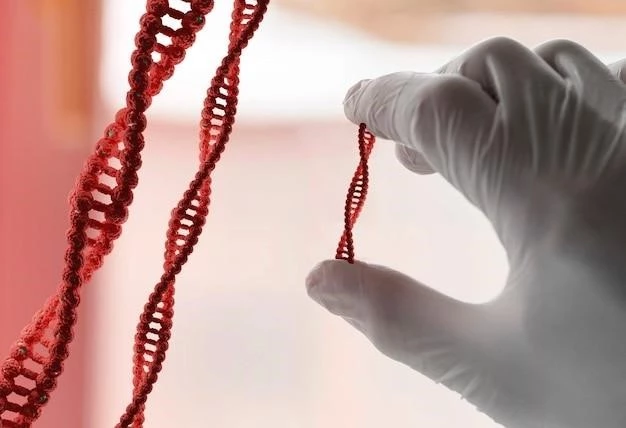Overview of Roussy–Levy Hereditary Areflexic Dystasia
Roussy–Levy Hereditary Areflexic Dystasia (RLHAD), also known as Roussy–Levy Syndrome, is a rare genetic neuromuscular disorder resulting in progressive muscle wasting. It is characterized by gait ataxia and areflexia, with symptoms typically appearing in early childhood.
Definition and Synonyms
Roussy-Lévy syndrome, also known as Hereditary Areflexic Dystasia, is a rare genetic neuromuscular disorder characterized by prominent gait ataxia, pes cavus, and distal muscle weakness. It is an autosomal dominant disorder that typically manifests in early childhood.

Causes and Genetic Basis
The Roussy-Levy syndrome is caused by mutations in genes responsible for the myelin sheath’s structural proteins, affecting nerve signal conduction and leading to muscle movement impairment.
Mutation in Proteins Affecting Myelin Sheath
Roussy-Levy syndrome is linked to mutations in specific genes responsible for encoding proteins crucial for the integrity of the myelin sheath. Alterations in these proteins lead to impaired nerve signal transmission, resulting in the characteristic muscle movement deficits observed in individuals with this disorder.
Clinical Presentation
The clinical presentation of Roussy-Levy Syndrome includes early onset gait ataxia, pes cavus, tendon areflexia, distal limb weakness, and progressive muscle atrophy.
Symptoms Progression
Symptoms of Roussy-Levy Syndrome progress slowly, with early signs of gait ataxia and areflexia in childhood, followed by the development of muscle weakness, tremors, and sensory loss over time. The slow progression of symptoms distinguishes this disorder.
Diagnosis and Differential Diagnosis
Diagnosing Roussy-Levy Syndrome involves clinical assessments, genetic testing, nerve conduction studies, electromyography, and ruling out other neuromuscular disorders like Charcot-Marie-Tooth Syndrome.
Distinction from Charcot-Marie-Tooth Syndrome
Roussy-Levy Syndrome is distinguished from Charcot-Marie-Tooth Syndrome by its slow progression, early onset of gait ataxia, and prominent areflexia, along with specific gene mutations affecting myelin sheath proteins.
Disease Management and Treatment
Management of Roussy-Levy Syndrome involves supportive care, physical therapy, orthopedic interventions, mobility aids, and regular monitoring for complications. Currently, there is no specific cure for the condition.
Current Approaches
Currently, management of Roussy-Levy Syndrome focuses on symptom relief, physical therapy to maintain mobility, and orthopedic interventions to address orthopedic complications. Research is ongoing to explore potential therapeutic interventions targeting the underlying genetic defects.
Prognosis and Outlook
The prognosis of Roussy-Levy Syndrome varies depending on the individual’s symptoms and disease progression. Patients may experience a slow decline in mobility and muscle function over time, impacting their quality of life.
Long-Term Impact on Patients
The long-term impact of Roussy-Levy Syndrome on patients includes progressive muscle weakness, mobility limitations, and potential complications leading to decreased quality of life. Regular monitoring and therapeutic interventions play a crucial role in managing the condition’s long-term effects on individuals.
Research and Advancements
Recent research on Roussy-Levy Syndrome has focused on genetic advancements, exploring potential therapeutic targets to address the underlying mutations causing the disorder. Studies aim to improve diagnostic methods and develop targeted treatments.
Latest Findings in Roussy–Levy Syndrome
Recent studies have emphasized the slow progression of Roussy-Levy Syndrome, shedding light on the genetic mutations affecting myelin sheath proteins and their impact on nerve signal transmission; Researchers are exploring potential targeted therapies to address the underlying causes of the disorder.

Support Resources for Patients and Families
For individuals affected by Roussy-Levy Syndrome and their families, various support organizations offer assistance, including information, advocacy, and access to resources to help navigate the challenges associated with the condition.
Organizations Offering Assistance
Several support organizations provide assistance to individuals and families affected by Roussy-Levy Syndrome. These organizations offer valuable resources, advocacy, and support to help manage the challenges associated with the condition.
Conclusion
In conclusion, Roussy-Levy Hereditary Areflexic Dystasia, also known as Roussy-Levy Syndrome, is a rare genetic neuromuscular disorder characterized by progressive muscle wasting. While there is currently no specific cure, ongoing research seeks to identify targeted therapeutic approaches to address the underlying genetic mutations. Support organizations are available to provide assistance and resources to individuals and families managing the challenges associated with this condition.
